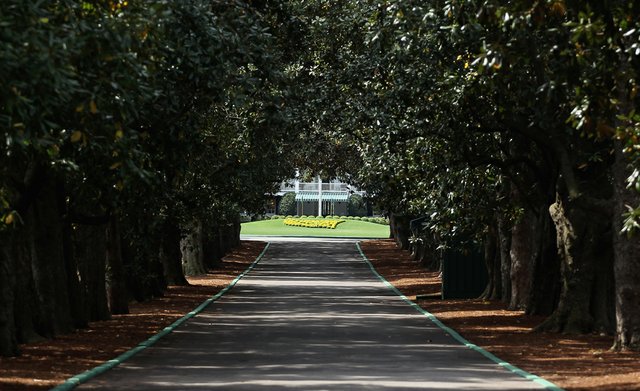 The cream of the crop always rises in golf's major championships and nowhere is this more true than at Augusta National for the Masters. Here are a few interesting notes to help get you prepared for the event:
The cream of the crop always rises in golf's major championships and nowhere is this more true than at Augusta National for the Masters. Here are a few interesting notes to help get you prepared for the event:
If you, like me, are filling out a Masters pool keep the following in mind:
- Phil Mickelson has only finished outside the top 10 in twice in the last 13 years
- Graeme McDowell, outside his tie for 17th in 2009, has missed the cut in his other three Masters starts
- Martin Kaymer is 0-for-4 in getting to the weekend at the Masters (despite his Monday hole in one) and Louis Oosthuizen is 0-3 in cuts made
- Geoff Ogilvy has six Masters starts, has never missed a cut, and counts three top-16 finishes, including a T4 last year
- Ian Poulter’s T27 in 2011 was his worst showing in the last five years. He tied for 10th in 2010
- Justin Rose has never missed the cut in six starts at Augusta. He tied for fifth in 2007, was T11 a year ago, and rolls in with a good dose of confidence
- David Toms has bounced back with three top-24 finishes in his last four starts
- Lee Westwood has three top-11 finishes in his last four Masters starts, his best showing being a solo runner-up two years ago
- Remember what Rory McIlroy did through the first 63 holes last year...and how he recovered from that final nine at Congressional
- Tiger Woods has won one green jacket in the last 10 years. Yet, dating to his last Masters victory in 2005, he has not finished worse than T6.
If I could pick any three golfers I'd have to go with (in this order) Rory, Phil and Tiger (yes, I know I'm going way out on a limb here)! My sleepers would be Cabrera, Ogilvy and KJ...

I am surprised and disappointed that the Augusta powers have failed to extend an invitation to Ernie Els. Ernie is currently playing beautifully, having finished outside the top 20 only once in his last 5 events. He is 34th in the Fedex Cup and ranked 58th in the world. Not to mention that he has often (albeit, not often enough) contended for the green jacket. Is Ryo Ishikawa really better than the Big Easy? Or does he just command a greater Japanese television audience?
That being said here is the FIELD and how they qualified.
Par 3 contest
Wednesday, April 4 from 3 p.m. to 5 p.m. ET on ESPN
First-round coverage
Thursday, April 5 from 3 p.m. to 7:30 p.m. ET on ESPN
Second-round coverage
Friday, April 6 from 3 p.m. to 7:30 p.m. ET on ESPN
Third-round coverage
Saturday, April 7 at 3:30 p.m. to 7 p.m. ET on CBS
Final-round coverage
Sunday, April 8 at 2 p.m. to 7 p.m. ET on CBS

As always the premium at Augusta is on the shortgame. Here is Geoff Ogilvy talking about the two toughest chips that almost all golfers will face during the week:
One of the toughest chips you can face on the course is from right of the 11th green, a spot where it seems at least one player in every group is playing from during the tournament. Bailing out away from the water is very tempting but no bargain. It is almost impossible to land a chip short on that green with any confidence; you just don’t know what the ball is going to do after it pitches. Then when it does get on the green it invariably races away. It’s such a subtle test, but one that gives the course much of its character.
The same is true behind the 15th green. It is so difficult to judge how much forward momentum the ball will have after it bounces and how fast it needs to be moving once it gets onto the sloping putting surface. And again, it is a shot that tends to come up a lot over the course of the tournament. Go for that green in two every day and you are likely to finish over the back at least twice.
Having had the opportunity to play both of these chip shots I can second his thoughts. I would almost always go for the front portion of the green at 11 rather than bail out right - water or not. Very tough approach from the right side there.
Here are a few sites that do a fantastic job covering the event:
GolfDigest.com
GeoffShackelford.com
Golf.com
Golfweek.com
To see unique photographs from a few of my previous visits to Augusta National click HERE and HERE
Have a fantastic week and enjoy the golf!












